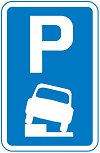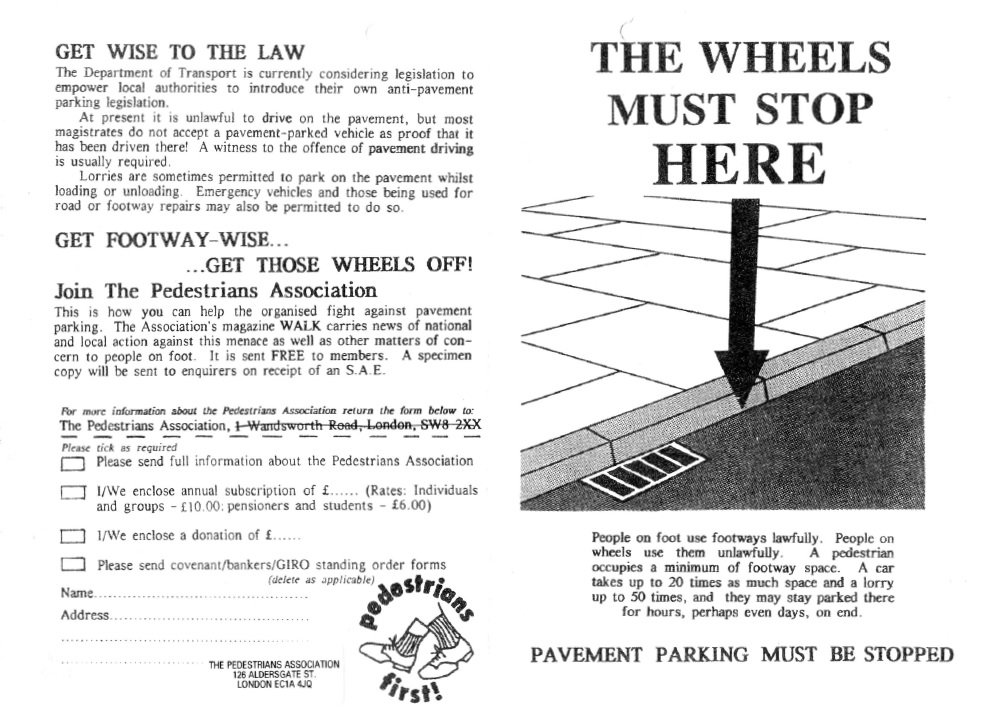
Review of documents relating to the legality of footway parking
There is a consensus in the documents reviewed that in England and Wales:
Footway parking is generally illegal except where specifically permitted or in an emergency.
This is on the basis of
- The House of Commons Transport Committee Report (2019)
- The House of Commons Library summary of the law
- The Police National Legal Database
- The DfT Traffic Signs Manual
- Other documents: The Merseyside Police website; The Pedestrians Association campaigning leaflet
The law was changed in Scotland in 2019, though not coming into effect immediately.
The House of Commons Transport Committee Report (2019)
Published in 2019, this states (p16) [1]
It also made a recommendation for an awareness campaign (Summary, p3):
The House of Commons Library summary of the law
Last updated in 2020, this states [2]
Although parking is generally permitted at the side of the road, except where there are restrictions or a specific offence has been committed, driving actually onto the pavement or footway (to park or otherwise) is an offence under section 72 of the Highways Act 1835, as amended.
Wilkinsons Road Traffic Offences explains:
Under the Highways Act 1835, s.72, it is an offence wilfully to ride or drive on the footway, even though the driving may last only for a few seconds (McArthur v Jack1950 S.C.(J.) 29). The offence will apply to pedal and motor cyclists. Driving across the footway to get to a private park was held to be an offence in the absence of proof of long use or of its being a way of necessity (Curtis v Geeves(1930) 94 J.P. 71) but in Vestry of St Mary, Newington v Jacobs(1871) L.R. 7 Q.B. 47 the owner of land adjoining the highway was held to be entitled to convey machinery on trolleys over the pavement into his premises...
Not all police forces take active steps to enforce [this law], but many more are now doing so in order to prevent subsequent parking on the pavement.
The Police National Legal Database
The Police National Legal Database indicates that parking on pavements can be an offence either via obstruction or via prohibition of driving on footways.
The database [3] contains an FAQ entry headed "What is the legal position in respect of motor vehicles parked on pavements? What offences may be revealed?
The first section of the answer relates to obstruction, and the second section to driving on to the footway.
The second section relates to driving on the footway, as follows:
The driving of a carriage upon any footway of a street is also an offence, (section 28 of the Town Police Clauses Act 1847).
Proceedings for the above offences under the Highways Act 1835 and Town Police Clauses Act 1847 will often be dependent on the defendant admitting driving his vehicle onto the pavement.
This is clear confirmation that driving a vehicle on to a pavement to park is unlawful.
The DfT Traffic Signs Manual
The DfT Traffic Signs Manual [4] points out in the context of footway parking, that it is an offence to obstruct the footway and that it is unlawful to drive on the footway; and also that footway parking can be permitted via a Traffic Regulation Order.
This document has a section (Section 8) on Verge and Footway Parking.
Section 8.1 is as follows:
Since the document points out in the context of footway parking that "it is unlawful to drive on the footway", it follows that it is lawful to park a motor vehicle (or bicycle) on a footway only if it has not been driven (or riden) there.

Specific permission to park can be given via traffic regulation orders and signs - see the illustration and the DfT Traffic Signs Manual
Other Sources
The Merseyside Police website
The entry under the heading "Can I park on the pavement?" is as follows.
Drivers are asked to have regard to pedestrians, particularly pram and wheelchair users and those who are disabled and partially sighted when parking their vehicles

Pedestrians Association leaflet
The Pedestrians Association (now Living Streets) in the past campaigned against pavement parking on the basis that driving on the footway is forbidden - see here.
References
| [1] | House of CommonsTransport Committee (2019) Pavement parking https://publications.parliament.uk/pa/cm201719/cmselect/cmtrans/1982/1982.pdf |
| [2] | House of Commons Library Briefing Paper Number CBP 1170 (January 2020) Pavement and on-street parking in England https://researchbriefings.files.parliament.uk/documents/SN01170/SN01170.pdf - or download from here. |
| [3] | The Police National Legal Database is hosted by West Yorkshire Police. The quote is taken from a printout of the website viewed on 4.10.2010. |
| [4] | DfT (2008) Traffic Signs Manual: chapter 3: Regulatory Signs https://www.gov.uk/government/uploads/system/uploads/attachment_data/file/223943/traffic-signs-manual-chapter-03.pdf - or download from here. |
| [5] | Merseyside Police website entry |
